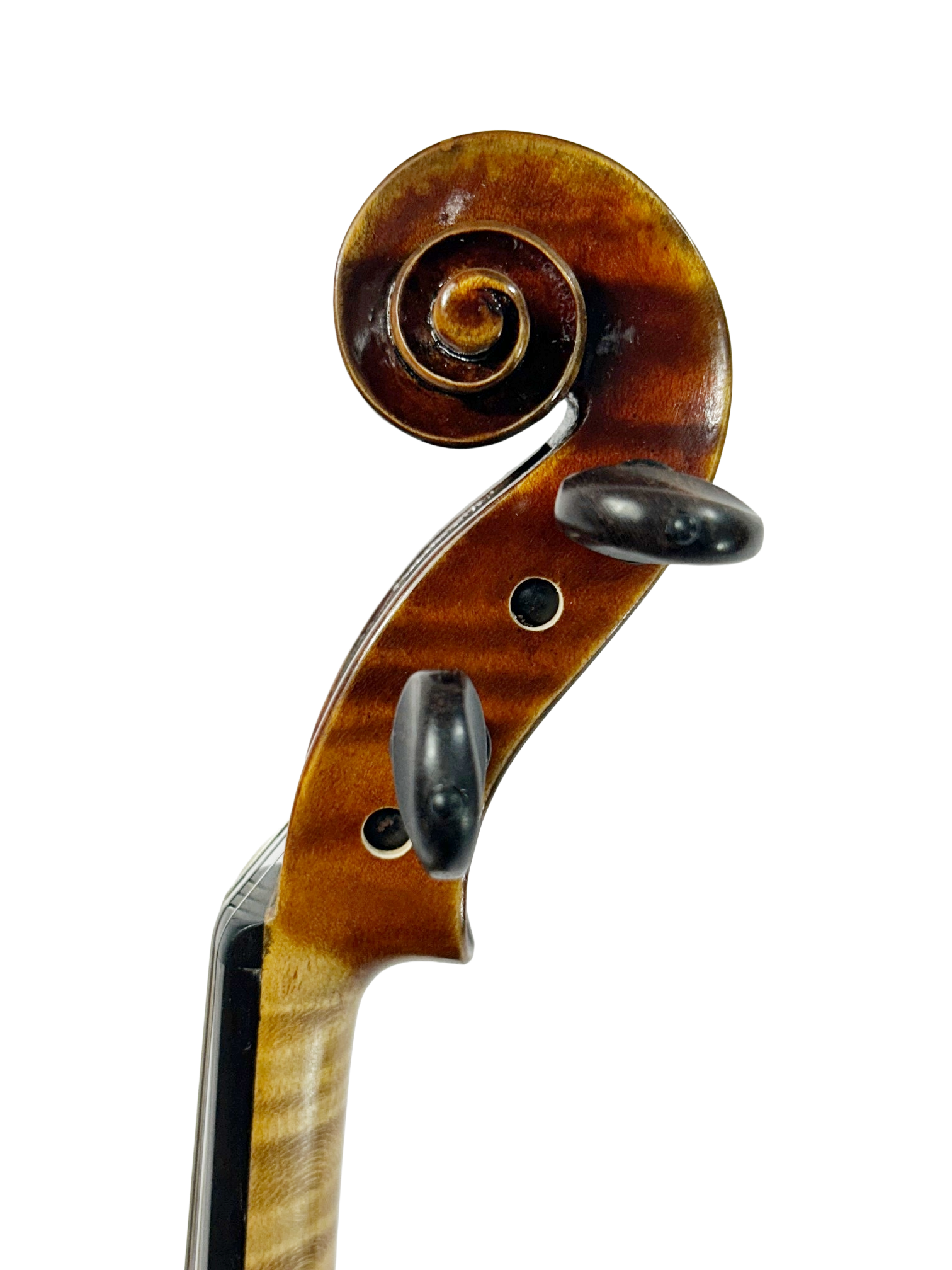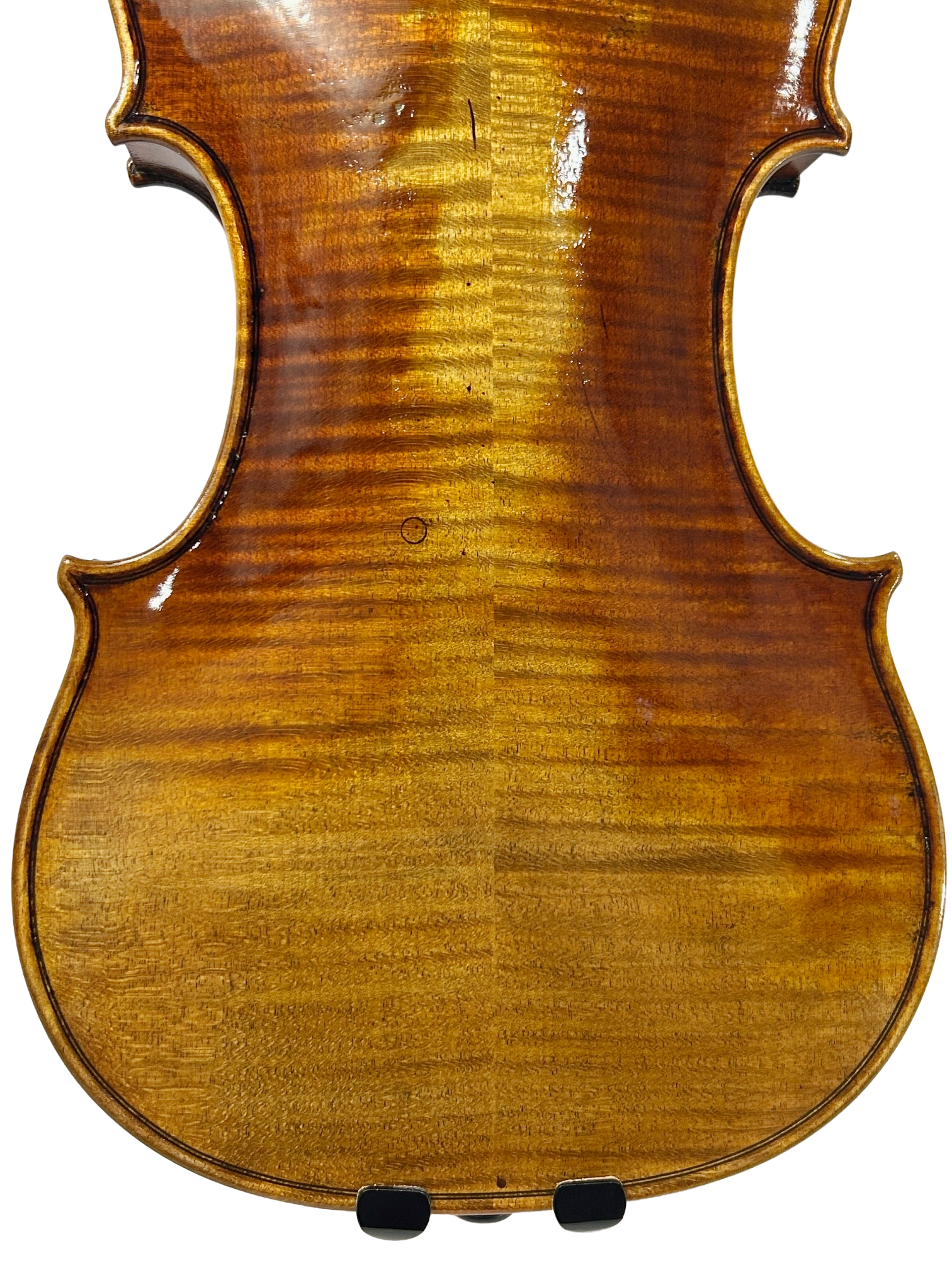 Image 1 of 14
Image 1 of 14

 Image 2 of 14
Image 2 of 14

 Image 3 of 14
Image 3 of 14

 Image 4 of 14
Image 4 of 14

 Image 5 of 14
Image 5 of 14

 Image 6 of 14
Image 6 of 14

 Image 7 of 14
Image 7 of 14

 Image 8 of 14
Image 8 of 14

 Image 9 of 14
Image 9 of 14

 Image 10 of 14
Image 10 of 14

 Image 11 of 14
Image 11 of 14

 Image 12 of 14
Image 12 of 14

 Image 13 of 14
Image 13 of 14

 Image 14 of 14
Image 14 of 14















Donato Guarneri Line- Guarneri del Gesù “Kreisler,” 1730 Violin 4/4 Size VN990G-1730K
The Guarneri del Gesù “Kreisler,” ca. 1730
In the early 1730s, Giuseppe Guarneri “del Gesù” of Cremona was forging his reputation as one of the boldest violin makers of the Italian Golden Age. Unlike the elegance and refinement of Stradivari, Guarneri’s work often appeared rugged, with powerful arching, distinctive f-holes, and deeply expressive varnish. His instruments spoke with a darker, more penetrating voice — perfect for virtuosi who wanted drama and projection on stage.
Around 1730, he built a violin that would one day become one of the most celebrated in his oeuvre. Centuries later, it came into the hands of Fritz Kreisler (1875–1962), the legendary Austrian violinist and composer whose artistry charmed audiences around the world. Kreisler’s warm, golden tone and lyrical phrasing seemed perfectly matched to this Guarneri. The violin, rugged yet refined in voice, gave him the palette to shape both the intimate Viennese charm of his encores and the grandeur of concerto halls.
Kreisler performed on this Guarneri for many years, and it became one of his signature instruments, alongside his Stradivari “Kreisler.” After his death, the Guarneri “Kreisler” continued its legacy in the hands of later great violinists, admired for its dark, powerful sound and for its place in both Cremonese violin making and Kreisler’s musical legend.
Today, the Guarneri del Gesù “Kreisler” (c.1730) is treasured not only as a masterpiece of Cremona’s golden period but also as a vessel of history — connecting Guarneri’s daring craftsmanship with the timeless artistry of Fritz Kreisler.
The Guarneri del Gesù “Kreisler,” ca. 1730
In the early 1730s, Giuseppe Guarneri “del Gesù” of Cremona was forging his reputation as one of the boldest violin makers of the Italian Golden Age. Unlike the elegance and refinement of Stradivari, Guarneri’s work often appeared rugged, with powerful arching, distinctive f-holes, and deeply expressive varnish. His instruments spoke with a darker, more penetrating voice — perfect for virtuosi who wanted drama and projection on stage.
Around 1730, he built a violin that would one day become one of the most celebrated in his oeuvre. Centuries later, it came into the hands of Fritz Kreisler (1875–1962), the legendary Austrian violinist and composer whose artistry charmed audiences around the world. Kreisler’s warm, golden tone and lyrical phrasing seemed perfectly matched to this Guarneri. The violin, rugged yet refined in voice, gave him the palette to shape both the intimate Viennese charm of his encores and the grandeur of concerto halls.
Kreisler performed on this Guarneri for many years, and it became one of his signature instruments, alongside his Stradivari “Kreisler.” After his death, the Guarneri “Kreisler” continued its legacy in the hands of later great violinists, admired for its dark, powerful sound and for its place in both Cremonese violin making and Kreisler’s musical legend.
Today, the Guarneri del Gesù “Kreisler” (c.1730) is treasured not only as a masterpiece of Cremona’s golden period but also as a vessel of history — connecting Guarneri’s daring craftsmanship with the timeless artistry of Fritz Kreisler.

